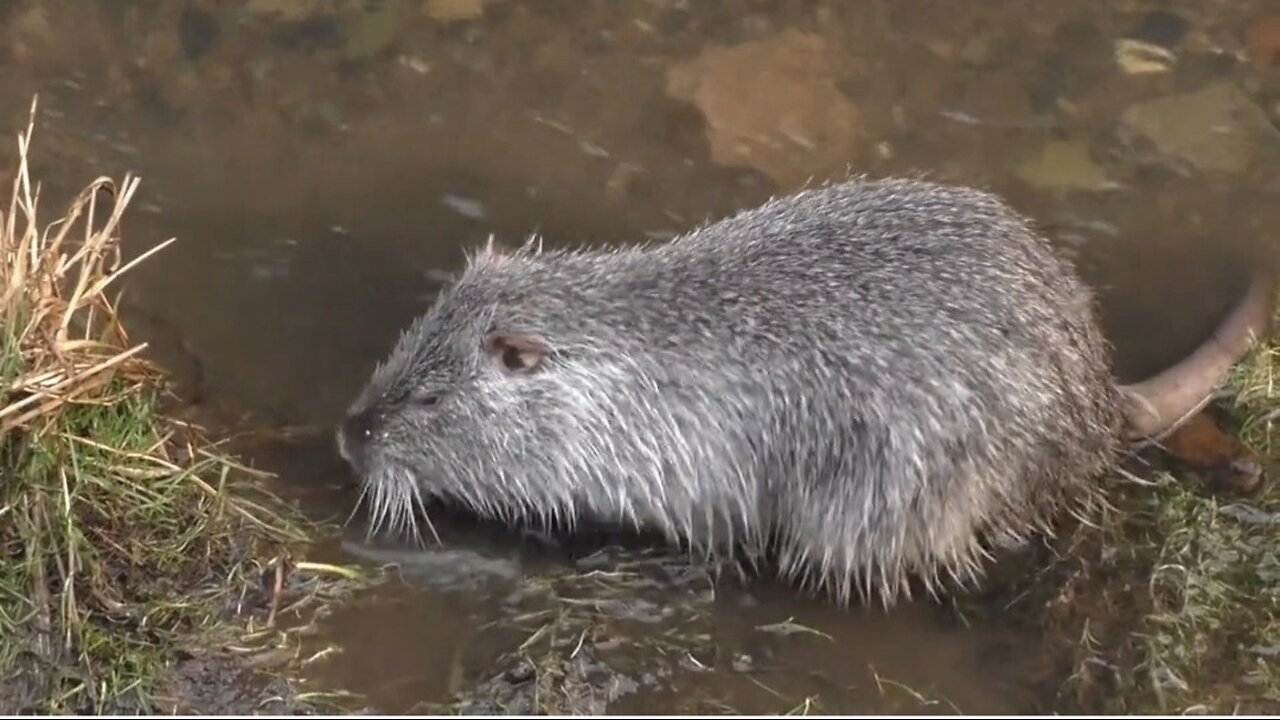Premium Only Content

"Nutria: A Closer Look at the Swamp's Unlikely Resident"
Introduce Nutria (Myocastor coypus) as a large, semi-aquatic rodent native to South America but now found in various parts of the world, including North America, Europe, and Asia.
Appearance: Describe their physical characteristics, including their elongated bodies, webbed feet, large front teeth, and distinctive, rat-like tails. Mention their fur, which is typically brown and can be quite dense.
Habitat and Distribution
Natural Habitat: Explain that Nutria thrive in wetland areas such as marshes, rivers, and lakes, where they can easily access vegetation and water.
Global Distribution: Discuss how they were introduced to regions outside their native habitat for fur farming in the early 20th century and how they have since established populations in various countries.
Diet and Behavior
Feeding Habits: Highlight that Nutria are herbivorous, primarily consuming aquatic plants, grasses, and roots. They play a role in their ecosystems by influencing plant growth and distribution.
Social Structure: Discuss their social behavior, including living in groups and their communication methods. Mention their nocturnal habits and how they build burrows or nests near water sources.
Ecological Impact
Positive Contributions: Touch on their role in wetland ecosystems, such as maintaining plant diversity and providing food for predators.
Negative Impacts: Address the potential problems they can cause, including overgrazing of vegetation, which can lead to erosion and loss of habitat for native species. Mention how they can also disrupt agricultural areas and contribute to water quality issues.
Conservation and Management
Population Control: Discuss efforts made in different regions to manage Nutria populations, including hunting and habitat management. Mention any conservation programs aimed at preserving native wetland habitats and species affected by Nutria.
Public Perception: Explore the mixed feelings about Nutria among local communities, from being viewed as pests to being appreciated for their role in ecosystems.
Conclusion
Summary: Recap the significance of Nutria in their habitats, their impact on ecosystems, and the importance of balanced management strategies.
Call to Action: Encourage viewers to learn more about wetland conservation and the role of various species in maintaining ecological balance.
Visual Elements
Footage: Use video clips showing Nutria in their natural habitats, feeding, and interacting with each other.
Graphics: Include diagrams of their habitat preferences and charts showing population trends in different regions.
Interviews: Feature insights from ecologists or wildlife experts to provide authority and depth to the discussion.
Engagement
Questions for Viewers: Pose questions at the end, such as "What are your thoughts on the impact of Nutria in your area?" or "Have you ever encountered Nutria in the wild?"
This detailed structure should help create an engaging and informative video about Nutria! If you need any specific sections expanded further, feel free to ask.
-
 1:01:32
1:01:32
VINCE
3 hours agoNew Info Blows the Lid Off The Butler Assassination Attempt | Episode 175 - 11/24/25 VINCE
171K67 -
 LIVE
LIVE
LFA TV
14 hours agoLIVE & BREAKING NEWS! | MONDAY 11/24/25
3,774 watching -
 LIVE
LIVE
Nikko Ortiz
1 hour agoWorst Military Events And War Crimes... | Rumble LIVE
248 watching -
 17:27
17:27
We Got Receipts
2 hours agoAntifa Getting Arrested In The Funniest Ways!
5.28K5 -
 LIVE
LIVE
Caleb Hammer
10 hours agoHe Treats His Wife Like A Dog | Financial Audit
241 watching -
 LIVE
LIVE
Badlands Media
4 hours agoBadlands Daily Nov. 24, 2025
3,798 watching -
 2:12:17
2:12:17
Matt Kohrs
12 hours agoStock Market Open, Breaking News & The Week Ahead || Live Trading $1M
20.7K1 -
 LIVE
LIVE
Wendy Bell Radio
6 hours agoWhy Do Democrats Put America Last?
7,050 watching -
 1:36:29
1:36:29
Graham Allen
3 hours agoIs The MAGA Divorce Real Or Did Elon Just Expose It’s FAKE?!
125K593 -
 LIVE
LIVE
The Big Mig™
3 hours agoTrump, We Must Focus All Our Energy & Might On Election Fraud
3,253 watching